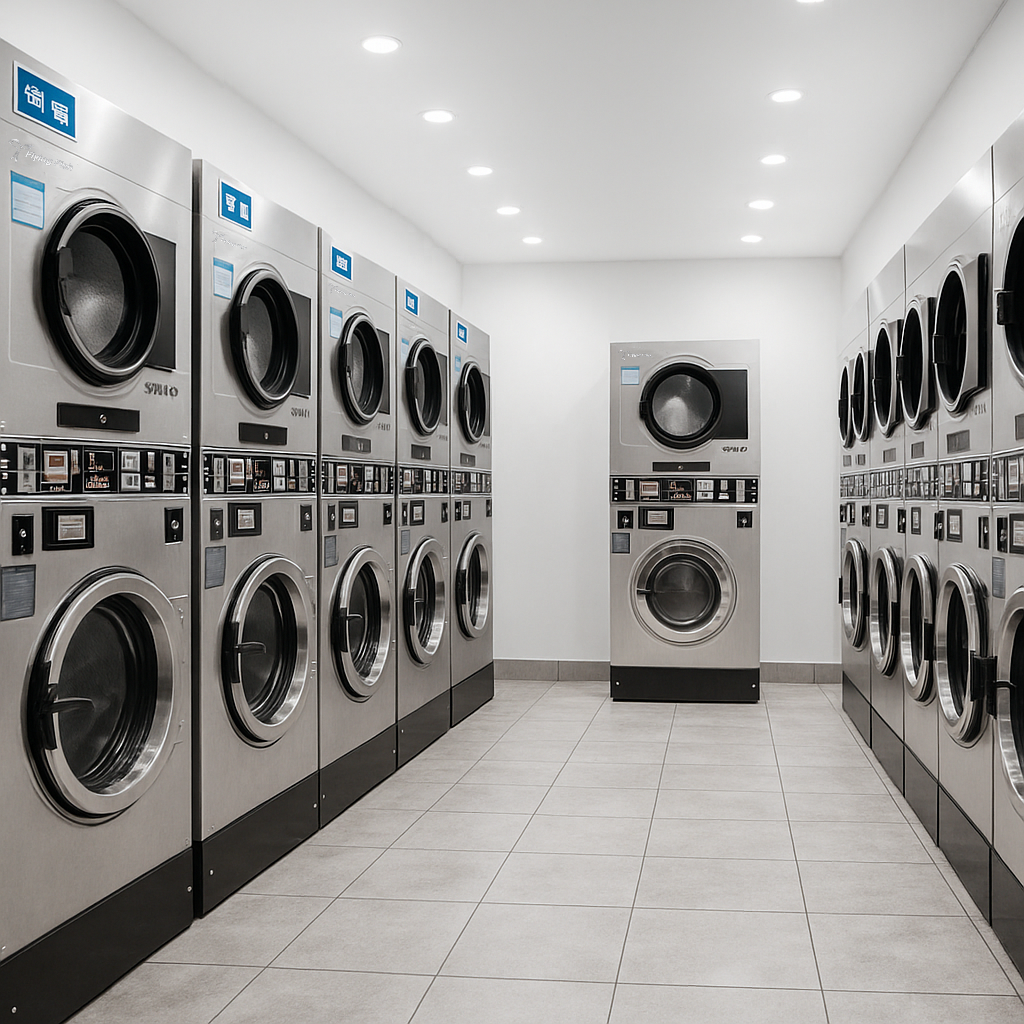Business-grade laundry machines, including large-capacity washers and specialized cleaning systems, handle continuous high-volume operations across hospitality, healthcare, and institutional sectors. These machines integrate advanced technologies to deliver efficiency and sustainability, using chemical disinfectants for sanitization and systems that capture and reuse waste heat. However, even robust systems face common issues without proper maintenance—from reduced cleaning performance to breakdowns that disrupt operations. Implementing structured maintenance routines addresses these risks directly.
Routine Cleaning: Stop Residue and Bacteria Buildup
Residue accumulation and bacterial growth top the list of preventable machine problems. Detergent residue, fabric lint, and moisture create environments where mold and bacteria thrive, leading to unpleasant odors, stained linens, and compromised hygiene—critical concerns for healthcare and hospitality settings.
Weekly cleaning protocols should include three key steps. First, wipe down door gaskets and detergent dispensers with a mild, non-abrasive cleaner to remove trapped residue. Second, run an empty "clean cycle" using a machine-specific cleaning agent; this cycle helps clear chemical disinfectant residues and maintain sanitization effectiveness. Third, clean the lint filters and drain pumps every 2–3 weeks. Lint buildup restricts airflow and drainage, increasing strain on motors and causing clogs that halt operations.
Component Inspection: Avoid Unexpected Breakdowns
Mechanical and electrical components suffer wear from constant use, making regular inspections vital for preventing unplanned downtime. Key components to check include hoses, seals, motors, and control panels—all critical to machine functionality.
Inspect water inlet and drain hoses monthly for cracks, bulges, or leaks. Replace worn hoses immediately, as leaks waste water, damage surrounding equipment, and violate environmental standards like EU Ecodesign regulations. Seals around doors and drums should be checked quarterly; cracked seals allow water to escape, reducing cleaning efficiency and risking water damage to internal parts.
For motor and electrical systems, schedule bi-annual inspections. Listen for unusual noises during operation, which signal bearing wear or misalignment. Ensure control panels display accurate readings for temperature, cycle time, and water levels—malfunctions here can lead to under-cleaned loads or energy waste. For machines used in healthcare settings, verify that high-temperature and sanitization cycle settings remain calibrated to meet JCI certification requirements.
Calibration and Efficiency Checks: Maintain Performance Standards
Large-capacity laundry machines rely on precise calibration to deliver consistent results while preserving energy. Over time, settings drift, leading to inefficiencies, non-compliant cleaning, and increased operational costs.
Calibrate water level sensors quarterly. Incorrect water levels cause overuse of resources or under-cleaned loads.
Semi-annual efficiency audits help track performance. Monitor energy usage metrics against baseline values. A sudden spike in consumption often indicates clogs, worn pumps, or misaligned components. For machines with systems that capture and reuse waste heat, check that these systems operate at optimal levels—reduced efficiency cuts into the 40% operational gains these systems are designed to deliver.
Compliance-Focused Maintenance: Meet Industry and Regional Rules
Business laundry operations must adhere to strict regulations, from healthcare hygiene standards to global environmental requirements. Maintenance routines play a key role in sustaining compliance and avoiding penalties.
For healthcare applications, document all maintenance activities, including cleaning dates, part replacements, and calibration checks. This documentation proves adherence to JCI guidelines and supports audit readiness. Ensure that chemical disinfectant systems undergo quarterly performance tests to confirm they eliminate pathogens effectively.
For operations in multiple regions, align maintenance with local standards. In the EU, verify that machines remain compliant with Ecodesign regulations by inspecting energy-saving components like variable-speed motors and heat recovery systems.
Conclusion
Proper maintenance transforms laundry machines from operational tools into reliable assets. Routine cleaning prevents hygiene issues, component inspections avoid costly breakdowns, calibration preserves efficiency, and compliance-focused care meets industry standards. For businesses relying on high-volume laundry operations, these practices ensure consistent performance, reduce operational costs, and protect the longevity of advanced laundry systems—directly supporting smooth daily operations across sectors.

